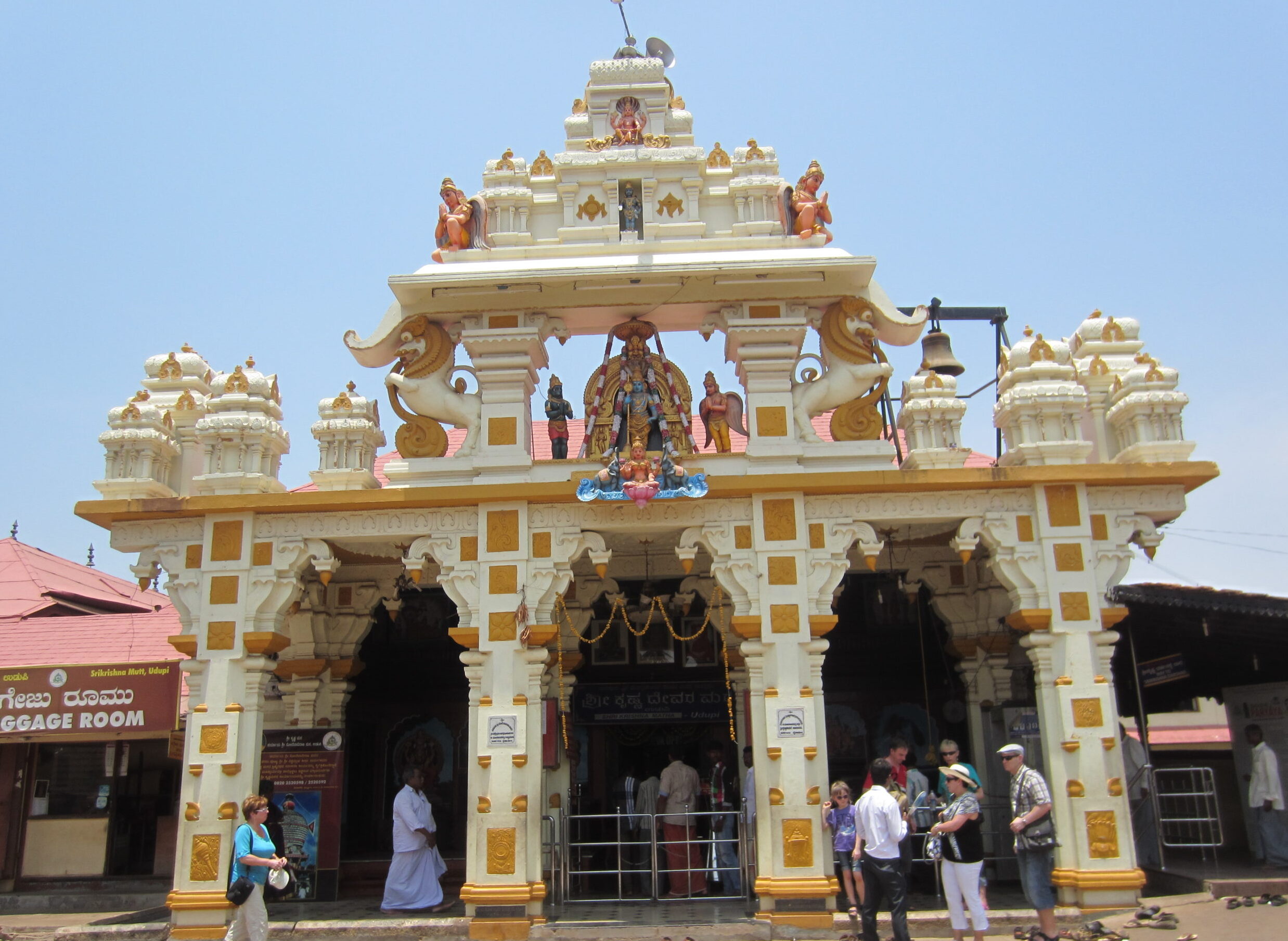Udupi Krishna temple is located 60 km from Mangalore, Karnataka; it is one of the most visited Krishna temples in India and is frequently placed in the list of most beautiful and grand temples in the country. Upon the visit to the shrine, the first and foremost eye catching corner of the temple is its entrance made of slanted roof which typifies the Kerala architecture. It is also considered to be an institution in itself for education in regards to religious activities and learning of ancient scriptures. The temple was founded by Sri Madhwacharya in the 13th century who incidentally also established the idol of Lord Krishna on the day of Makar Sankranti.
Sri Krishna Temple in Udupi is an important pilgrimage site in South India. Thousands of devotees throng this temple town to offer prayers to Lord Krishna. It is said that the Krishna idol here is the most beautiful idol of Lord Krishna. Lord Krishna is depicted here as a small boy (Balakrishna). The idol is not seen directly, but through a 9 holed window called the Navagraha Kitiki. Udupi is referred to as ‘Mathura (birthplace of Lord Sri Krishna, situated in Uttar Pradesh state) of South India.

Udupi Krishna Temple
As part of many legends, the one that stands out is about the idol itself which was found by Vaishnavite saint Madhwacharya in the form of clay lump which was yellow in color. Another legend about the temple is associated with the “darshana” of Lord Krishna through “Navagraha Kindi”, the window which is the only way to catch a glimpse of Krishna. Legend has it that this window is the result of reverence that one of Krishna followers by the name Kanakadasa had toward the almighty. Being from lower strata of the society, he could not access the temple from the doors meant for the higher class individuals. But the adamant follower stayed outside the temple to express his gratitude to the almighty. Furthermore, the legend reveals that this reverence resulted in the collapse of the wall on the rear side of the temple which enabled Kanakada to see the idol of Lord Krishna.
Udupi Krishna Temple Architecture
The entire premise of Udupi Krishna Temple is well managed and one can have “darshan” of the deity through a closed grille gate. The idol itself is seen adorning precious jewelry and gold ornaments. Lord Krishna is seen in his adolescent form which is better known as “bala roopa” The other temples inside Udupi Krishna include Chandreshwara, Anantheshwara and Sri Krishna. The golden chariot of Lord Krishna too enthrals every devotee for its sheer intrinsic value. The oil lamps inside the sanctum invoke curiosity due to the fact that they were positioned by Sri Madhwacharya himself. According to the popular belief Anantheshwara temple was established by King Rama Bhoja, a pious follower of Lord Parasurama. After offering their prayers to the deity, visitors can have “annaprasadam” within the premise of the temple. Despite being fairly crowded for most part of the day, the temple offers serene atmosphere in the instrumental music and drum beats which are conducted at the time of keertan and worship.

Sri Krishna Mutt, Udupi
As mentioned earlier, Sri Krishna Udupi temple serves as center of learning as well. The Sri Krishna Udupi Mutt is one such venue in this direction. The mutt or ashram is the place of dwelling for pious Krishna followers who come from all over the world to enrich themselves in the knowledge of Lord Krishna and his various incarnations or “avatars”. The mutt follows the teaching methodology of Sri Madhwacharya, founder of Dwaita philosophy. Although Krishna Janmashtami remains the key festival which is celebrated in every place of Krishna’s worship, Udupi Krishna Temple organizes festivals with great vigor during Sri Madhwa Navami, Ganesh Chaturthi, Navaratri, Deepavali as well.

Paryayothsava
This festival is unique to Udupi Krishna temple which follows well defined guidelines in terms of performing every ritual on the deity. Paryaothsava, the grand festival attracts hordes of people from the entire state to witness the transfer of Puja every two years on the 18th day of January. Another festival to be celebrated every year is Sapthotsava that lasts for seven days.



